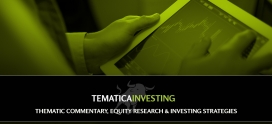Our Scarce Resource theme once again drives food inflation
Aside from uncovering data points that support our thematic perspective, we also like to connect the dots between our themes as well, given the potential for one theme to be a catalyst for the other. We’ve seen that in the past with droughts — a recurring aspect of our Scarce Resource theme — and we are seeing it once again as a current drought as this article from the New York Time details:
British shoppers began noticing in recent weeks that hummus prices were up significantly. The cause: a drought thousands of miles away.Insufficient rains in India have resulted in several years of poor harvests of chickpeas, the main ingredient in hummus. The country, by far the world’s largest producer of chickpeas, mostly grows the legume for domestic consumption. But worse-than-expected harvests mean that it has had to buy more chickpeas from growers elsewhere, putting pressure on supplies worldwide and driving up prices.Those limited supplies of chickpeas have combined with rising demand for hummus in Britain to send prices higher. Average prices for the dish at supermarket are 12 percent higher than a year ago, according to the trade magazine The Grocer and the research consultancy Brand View. That is significantly more than grocery price inflation of 3.6 percent, and overall inflation of 2.7 percent.
Source: Rising Hummus Prices? Blame a Drought Half a World Away – The New York Times
As food prices climb, we tend to see Cash-Strapped Consumers switch their spending to different items, usually trading down in one item for another to match their budgets. With revolving credit, largely a reflection of credit card debt, having grown at an annual rate of 6.0% to $1.03 trillion in December, consumers are poised to feel the pinch of higher interest rates on their spending dollars.
Said another way, it looks like more will be skipping the hummus in the coming days because they may not be able to afford it.



